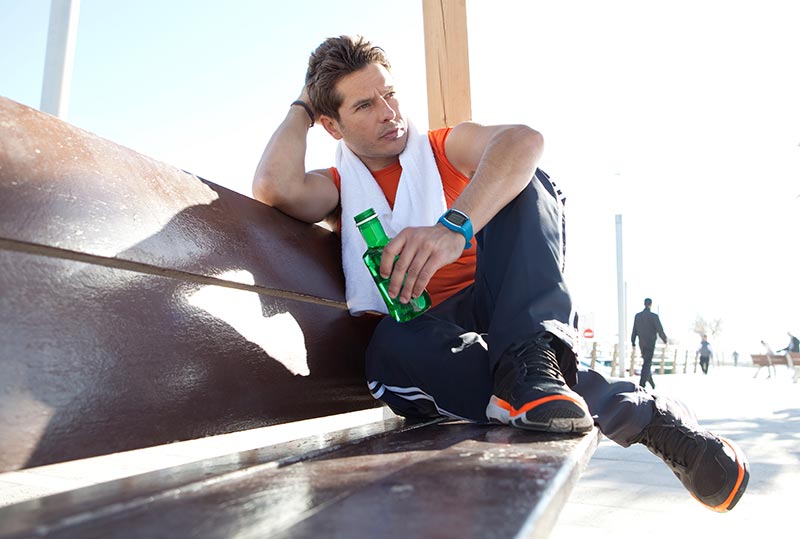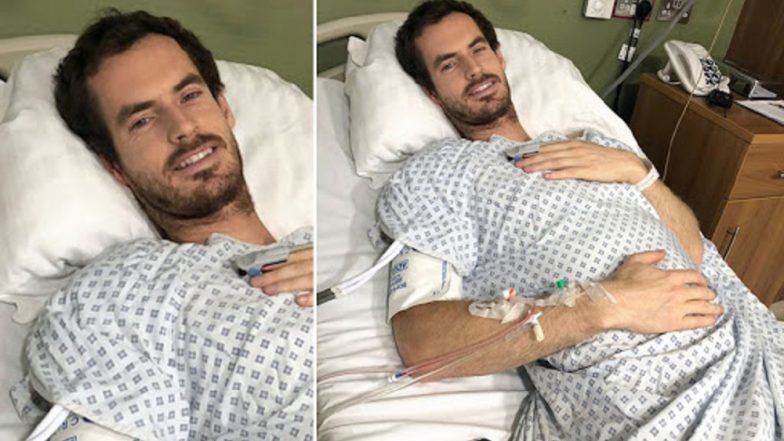Tuesday 12 February saw the launch of the Concussion in Sport Australia Position Statement.
Continue readingAndy Murray Birmingham – Almost Like We Do In Ballarat
Rapid Recovery Techniques are routine in Ballarat – not in Birmingham!
The Birmingham Hip Resurfacing was an idea from the 1990’s trying to achieve high functioning, long lasting hip replacements. In farmers, in strong boned patients, young males, it is still a legitimate choice for hip replacement. It has a metal on metal articulation, which is hard wearing, and may never wear out in many patients. They have a large diameter articulation – just like the native hip – and have a dislocation rate approaching zero.
According to media reports, Andy Murray has had a Birmingham resurfacing, and has published photographs in hospital to his Instagram account.

David Mitchell has done some 200 Birmingham’s here in Ballarat using Local Infiltration Analgesia as a key part of the joint replacement to achieve rapid recovery, 70% of all joint replacements go home the day after surgery. The patients are typically up walking with two crutches on the day of surgery, many on just one crutch the day after surgery, then discharged home.
It is a challenging operation through the mini posterior approach (a 10-14cm incision in the buttock) and so many surgeons have changed to recommending anterior approach hip replacements. To date there isn’t a published study comparing the two – let alone in they typical younger male population group. There is experimental work being done using ceramic-ceramic hip resurfacings, which would avoid any risk of metal ions leaching. The incidence of metal problems in Birminghams has been very low, but it certainly isn’t zero.
Who know’s how Andy Murray will go? It is reasonable to expect to see him back in the veterans, and in the doubles at Wimbledon. If he does make it back to Wimbledon gentleman’s singles, he will go up in lights as one of my orthopaedic patient hero’s.
BOSM’s Sports Physicians at the Road National Championships
BallaratOSM’s Sports Physicians had the pleasure of caring for Australia’s top cyclists at the Cycling Australia FedUniAustralia Road National Championships January 4-8 2019.
Dr Greg Harris was this year’s Road Nationals Sports Physician, accompanied by Dr Anthony Hipsley.
Dr Harris’ personal association with cycling is a long one. He travelled with the Australian U23 squad many years ago, when Simon Gerrans and Gene Bates were in the squad. He worked at the UCI Track World Championships in Melbourne 2012, and at the Revolution track events in Melbourne. He has published original research into over-hydration at the Bicycle Victoria Around the Bay in a Day ride, and enjoys a weekend ride himself.
Greg is pleased to be of assistance to the major sports teams when needed. For other competitors we can provide priority access to our services as well.
Our Sports Physicians make up Ballarat’s only specialist Sports Medicine clinic, providing Sports Physician, Orthopaedic and physiotherapy services to all of western Victoria.
Low Risk Total Knee Replacement Design
According to the AOA National Joint Replacement Registry, the best knee replacement design choice has a 60% reduction in revisions, but it only used by 9% of surgeons.
In October 2018 – The Australian Knee Society held it’s Annual Scientific Meeting. Chris Vertullo from the National Joint Replacement Registry presented a concept that not all surgeons make rational decisions from the AOA NJRR. The low risk implant is: Cruciate retaining, cemented tibia, with patella resurfacing, highly cross linked polyethylene, and fixed (not mobile) bearing. The re-operation rate at 10 years for this combination is 2.4%, contrasting 5.5% for combined results of alternate designs, i.e. a 60% reduction in the risk of requiring revision surgery. This is based on a 482,373 knee replacements performed in Australia.
A difficulty has been that each individual factor has only a marginal change to results, and hard to prove. Patella resurfacing has been difficult to prove that it improves results. But – there is a marginal decrease in re-operation if it is done at the primary operation. The Australian incidence of patella resurfacing is now gradually increased from 41% in 2003 to 64% in 2016. How implants are fixed to the has changed in the same period from 74% to now 89% where surgeons only trust bone cement to permanently bond the tibia to the metal. The other difficulty is an individual surgeon’s figures aren’t the same as averaged data, and patient satisfaction isn’t measured in the registry.
Not discussed was what to do with younger patients with arthritis. Where possible, joint replacement should be avoided with weight reduction and other non operative managements, osteotomies, and sometimes partial knee replacement. The 10 year revision rate for TKR is 13% for men under 55, vs 8% for men 55-65, so picking a surgeon prepared to discuss all options is wise!
Mr David Mitchell
Refs:
Vertullo CJ, Graves SE, Peng Y, Lewis PL. An optimum prosthesis combination of low-risk total knee arthroplasty options in all five primary categories of design results in a 60% reduction in revision risk: a registry analysis of 482,373 prostheses. Knee Surg Sports Traumatol Arthrosc. 2018 Aug 20. doi: 10.1007/s00167-018-5115-z. [Epub ahead of print]
Pilling RW et al, Patella resurfacing in primary total knee replacement: a met-analysis. JBJS(Am) 2012, 94(24):2270-8
Pavlou G, Patellar resurfacing in total knee arthroplasty: does design matter? A meta-analysis of 7075 cases. JBJS(Am) 2011, 93(14):1301-9








